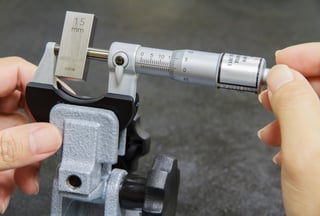Transducers are used across many applications to provide accurate, real-time data of how a system is working. Calibration is critical to maintaining a pressure transducer’s accuracy and it is not a one-time process. All pressure transducers used in critical applications should be regularly calibrated to maintain high performance. If a transducer drifts out of its specified pressure range, it can lead to false pressure readings causing decreased equipment performance and possible safety concerns. Calibration allows the user to be completely confident that their transducers are correctly performing and measuring the required pressure range accurately.
So, how often should you calibrate a pressure transducer? It is a common question we get asked all the time. Pressure transducers should be calibrated as often as needed in order to, maintain the necessary accuracy for the application. The amount of calibration required by the transducer can vary based on factors, such as the application and the transducer’s stabilityApplication

Depending on the industry type, organizational and government calibration regulations may govern the frequency of calibration. Highly regulated industries such as pharmaceuticals and food & beverage must maintain a high accuracy level to ensure everything is operating properly and to minimize any safety risks. To verify proper readings in these applications where accuracy is critical, it is best practice to calibrate transducers at least twice a year.
For example, the FDA has stringent guidelines in the pharmaceutical industry for sterile drug products that are produced by aseptic processing, requiring them to meet cGMP practices throughout processing. These guidelines mandate scheduled calibrations at set intervals based on the type of aseptic production area.
Another example of a highly regulated industry where calibration is a major concern is the oil and gas industry. Due to its volatile nature, oil and gas calibration standards must be highly regulated by the government to ensure safe opportunities at all stages of production and distribution of the product. Strict calibration guidelines reduce the risk of hazardous situations such as, explosions, oil spills and accurate chain of custody of the costly material.
Transducer’s Stability
A transducer’s stability can have a huge impact on how often the transducer should be calibrated. Stability, typically specified on a transducer’s data sheet, refers to a sensor’s consistency of measuring the desired pressure ranges over a given time. Sensors that are found to be highly stable do not need to be recalibrated as often as sensors that tend to drift out of the specified range. Users can determine a transducer’s stability by performing a calibration history trend analysis. Based on the results of the calibration history trend analysis, the calibration interval can be extended or shortened based on the application accuracy requirements.
CLICK HERE to learn about Setra's product that can make calibration simple.



